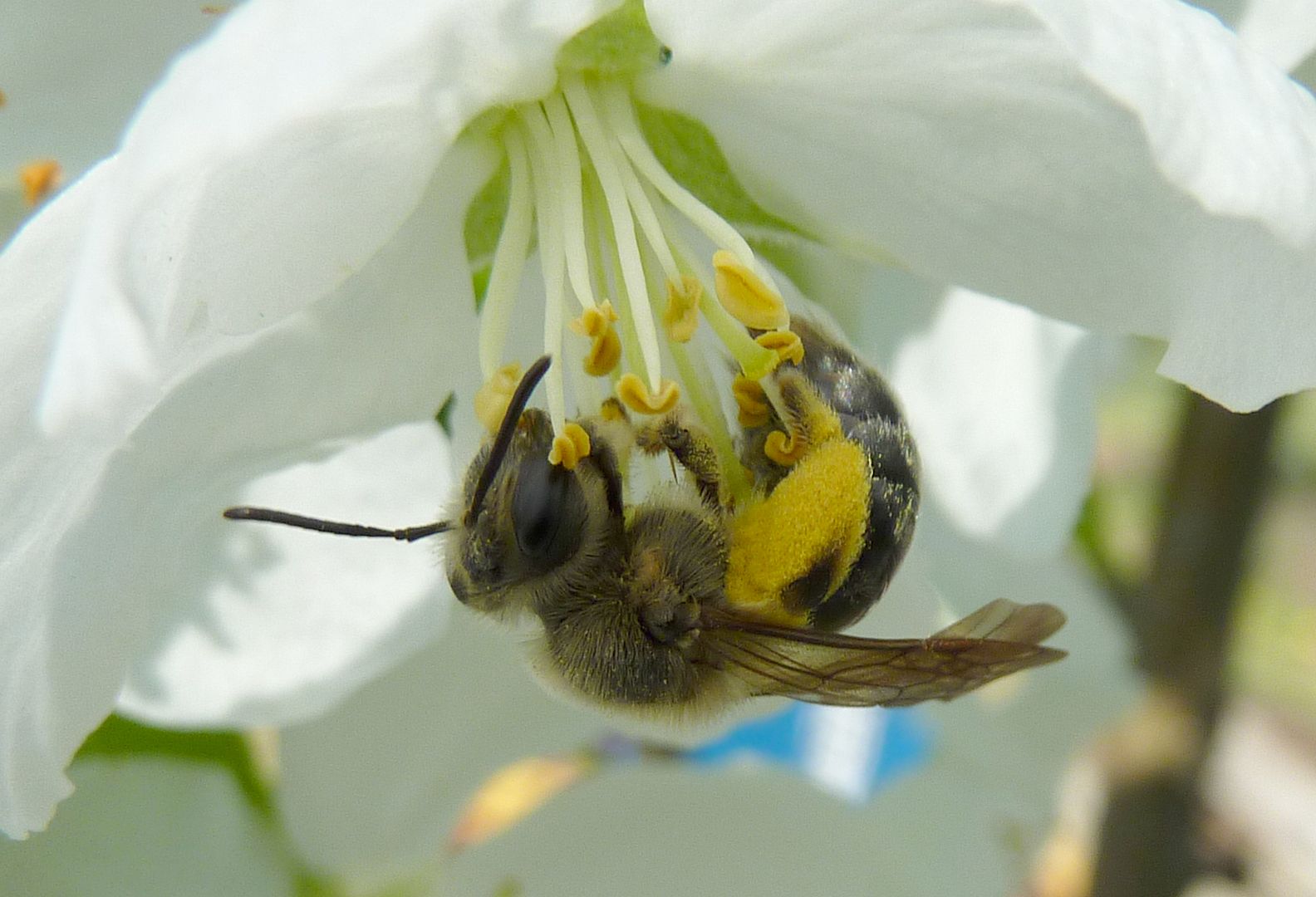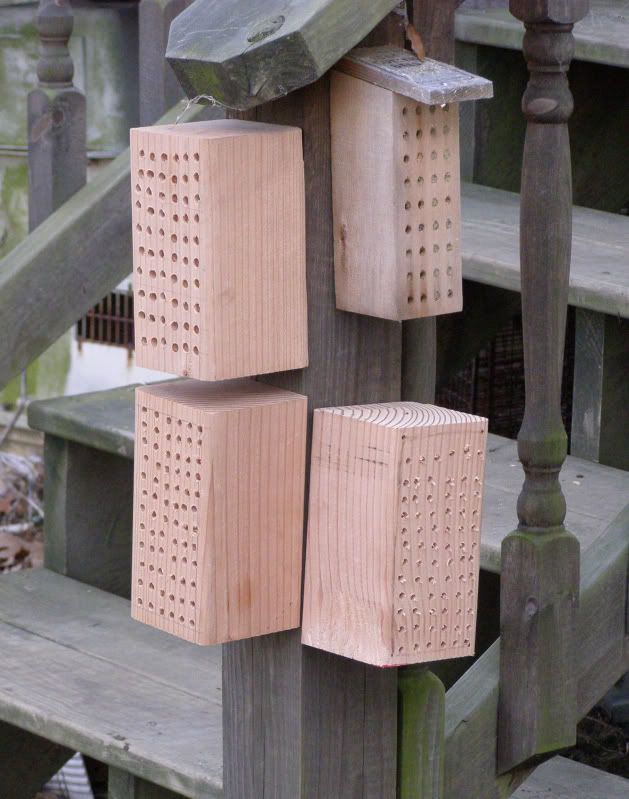Our surveys indicate that native bees may outnumber honey bees in many orchards and we are trying to determine what orchard management practices promote native bee abundance and diversity. Many local apple growers no longer bring honey bees into their orchards - they are relying increasingly on the naturally occurring native bees for apple pollination.Holy Cow! Farmers that don't use honey bees for pollination. It really is the future, and of course this supports my saying that honey bee hives should be viewed more as a crop, especially for the backyard beekeeper. They're still useful as pollinators for some crops. And where native bees aren't abundant they can easily be used for quick pollination services. One thing I've found that's needed to build a good native bee population is a healthy environment. Usually this would be the hedge, or forested water shed area surrounding the farm. Mainly an abundance of soil types, slopes, hallow stemmed plants, dead wood, with an abundance of native plants that flower when the bees are active are needed for these other pollinators to show up and establish themselves. This can be tricky though for farmers because they want the bees to focus on their crop most of all. Maintaining a patch of wildflowers and mowing it over when the crop starts blooming would solve this problem.
My apple trees have started blooming and there is an array of pollinators on them. This one in particular I believe is some type of digger bee. Though it looks a lot like a honey bee the proportions aren't quite right, the abdomen looks to thin, and the pollen on the legs isn't collecting as it would on a honey bee.
I was only able to get close ups of this one type of bee. There were several species working both of them that looked just like this but varied in size. Some where about as big as this bee's pollen sac. A bee fly or two was also buzzing around the flowers but all these other bees were so shy. All of them fly away. I'll try harder next time.
Fruiting apple trees seem to have larger flowers than crabapple trees. I encourage people to buy both for different situations. Both look pretty when flowering. Fruiting trees produce fruit (once you get past the laundry list of things that can go wrong with apples) and probably shouldn't be above a driveway, or near the street. Big falling apples can hurt and inspire ludicrous theories about gravity. Crabapple trees have lots of ornamental potential, especially in the winter. Many crabapple trees become loaded with red-orange berries that birds will eventually eat, but in the meantime they look pretty when the snow falls.
Remember though, a health population of bees are needed to get the fruit. Mason Bees are probably the easiest to house and I strongly recommend buying a product rather than making your own. Those Mason Bee blocks I made (the ones lacking a roof) took an hour to drill all the holes out, and 45 minutes once I got going. The bees mostly didn't use them and favored a system I bought from Knox Cellars. There are other providers on the web of course and a number of systems available on Amazon too.
Search Amazon.com for mason bee
 I haven't tried them all of course but I can say this one here didn't work for me. It's made by an Asian company that uses bamboo sticks as tubes. It's likely intended to attract the Giant Resin Bee, Megachile sculpturalis, another import from Asia. Like the smaller mason bee they use tubes, usually the former nests to the Giant Carpenter Bees that they resemble.
I haven't tried them all of course but I can say this one here didn't work for me. It's made by an Asian company that uses bamboo sticks as tubes. It's likely intended to attract the Giant Resin Bee, Megachile sculpturalis, another import from Asia. Like the smaller mason bee they use tubes, usually the former nests to the Giant Carpenter Bees that they resemble.I've seen them at a friend's house up the street a few minutes but have never found them on anything in my yard. Note the big eyes compared to the head and the elongated abdomen. These bees are huge like our Giant Carpenter Bees but they have the sliming qualities of a Mason Bee.




